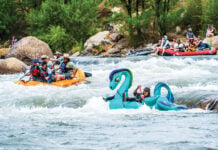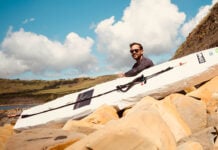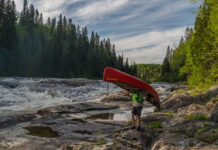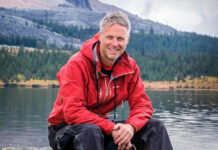Christmas 2015 was a little different for seasoned adventurers Dave and Amy Freeman. The pair adorned their tent with solar-powered Christmas lights, built glowing ice luminaries, baked Norwegian sandbakkelse cookies and chowed down on a dehydrated holiday feast. Three months before, the Freemans had embarked on a yearlong stay in the Boundary Waters Canoe Area Wilderness in northern Minnesota. The pair are spending a full year exploring more than 3,000 miles and 500 lakes and streams by canoe and dogsled in support of a campaign to protect the Boundary Waters from proposed sulfide-ore copper mining on the wilderness’ edge.
Unlike their 2015 expedition, which saw the Freeman’s paddle from the South Kawishiwi River to Washington, D.C. to hand deliver a canoe signed with 2,000 signatures protesting the mine, the year spent in the wilderness is dedicated to exploring and bringing awareness to America’s most popular canoe tripping destination. “We are not here to cross it or conquer it, but to bear witness to it,” says Dave.

How did you stay warm through winter?
It’s all about the calories. We ate between 4,500 to 5,000 calories a day. A typical day would start with coffee and oatmeal with a dollop of peanut butter, followed by trail mix, hunks of cheese and a Thermos of soup. Dinner consisted of pasta with smoked, responsibly harvested salmon, lots of butter or olive oil, dehydrated veggies and parmesan cheese. When it was really cold or we had worked extra hard we would bake a chocolate cake.
Does the reality of a year in the wilderness live up to the dream?
It’s not for everybody and we have our moments, but for the most part we work well together and enjoy being alone. We have found that communicating clearly and honestly with each other is important and we try to caring and considerate of each other’s needs. It is easy to get short with each other when we are cold, wet and tired. When this happens we try to talk about the conflict after we have had a warm meal, or the stresses have abated.
What have been the best and most difficult times?
Sitting by the lake and drinking our coffee and watching the light change is often one of the best parts of our day. We also enjoy finding a new place to camp, setting up our tent and making our new temporary home. Low days have been when we hear news from the outside world, like the passing of a relative, the Paris attacks, the Syrian refugee crisis and Prince’s death.
What’s after a Year in the Wilderness?
Hopefully we will have acquired a diverse array of stories, insight and photos that will allow us to travel around the country and share this special place with many more people through speaking engagements at schools, businesses and symposiums. We were transformed by the wilderness long ago, but it is becoming apparent that visiting is not enough. We have to work tirelessly to protect places like the Boundary Waters so that future generations will also be able to experience its transformative effects.
What have you learned so far?
We have learned to slow down and appreciate little things we would normally rush past. Being immersed in the wilderness has helped us understand how dramatically humans have altered and continue to alter the planet. It’s becoming clear to us that we need to put sustainability at the center of the the decisions we make. More than anything this experience has affirmed what a unique national treasure the Boundary Waters is and the need to protect it.
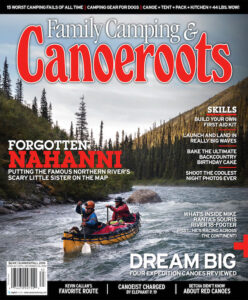
Subscribe to Paddling Magazine and get 25 years of digital magazine archives including our legacy titles: Rapid, Adventure Kayak and Canoeroots.



